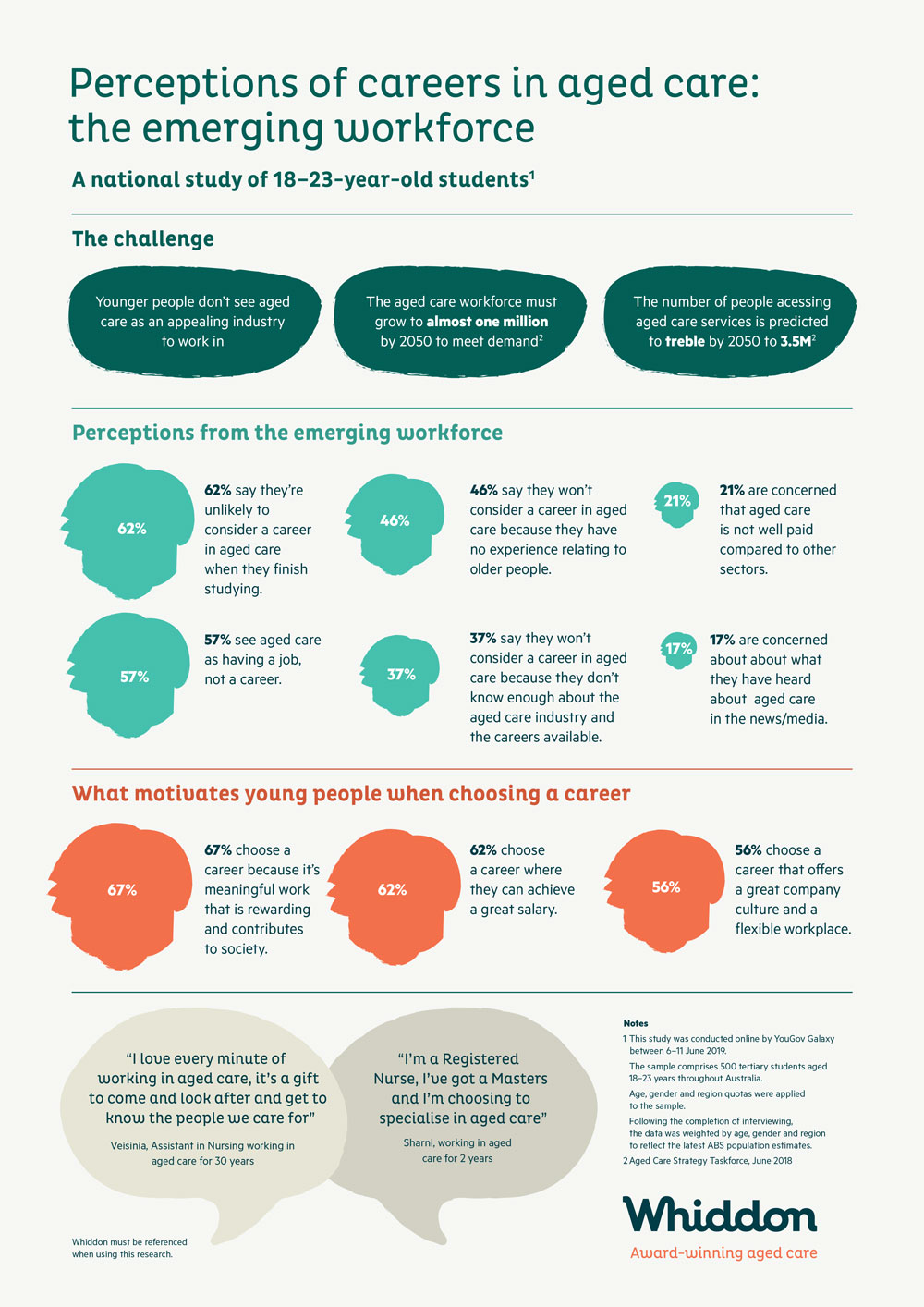- Care solutions
- Home Care
- Residential Care
- Retirement Villages
- Dementia Care
- Disability Services – NDIS
- Respite Care
- What is Aged Care?
- Health & Wellbeing
- Our Locations
- Careers
- About Whiddon

The infographic below produced by Whiddon highlights critical workforce challenges the aged care industry faces as our population ages, and shows the key findings of research undertaken by YouGov Galaxy around perceptions of aged care careers among young Australian tertiary students.

The research released by not-for-profit aged care provider, Whiddon, on Aged Care Employee Day (7 August), revealed that the majority of the emerging workforce would be unlikely to consider a career in the industry (62%) 1.
The survey by YouGov Galaxy found that the understanding of opportunities within the sector was low among Australian tertiary students, with the majority viewing aged care employment as just “a job” rather than “a career” (57%), and a third not seeing a “clear career path” in the industry (30%) 1. Most were unlikely to consider working in the sector because they don’t have any experience relating to older people (46%), and limited knowledge about the industry and available careers (37%) 1. Almost one in five (17%) wouldn’t consider it because of what they have heard about the sector in the media. 1
In contrast, emerging professionals also want to contribute to society and be rewarded for their work, with the majority considering finding meaningful work that helps others (67%) to be the most important factor when selecting a career. 1
To keep up with and support Australia’s increasing older population, improving the volume and quality of aged care employees entering the sector will be more critical than ever. However, while staffing needs are predicted to grow to almost one million by 2050, 2 industry projections indicate that the workforce is in fact expected to experience an outflow of employees leaving the industry. 3
The Government has acknowledged that the sector must be considered a desirable and rewarding place to work for providers to attract and maintain a flexible and responsive workforce.4 However, public opinion of the sector is at an all-time low, and misconceptions and sentiment around aged care can potentially discourage the talent of the future from entering the industry.
Chris Mamarelis, CEO of Whiddon, said to positively shape and strengthen the sector employers will need to find innovative ways to overcome barriers of perception and low awareness among younger people, as the need for new talent increases.
“As our older population continues to grow, we need to proactively inspire the stars of the future, especially in regional and rural areas. Aged care is one of the most fulfilling and stimulating industries a person can be part of, but the research indicates we need to increase awareness about the opportunities that exist and the more fulfilling aspects of a career in aged care. By educating young people now on the dynamic and rewarding range of roles and aged care pathways, we can strengthen this vital industry for decades to come,” he said.
References: 1. Data on file. 2019. YouGovGalaxy. 2. Statement former Aged Care Minister Ken Wyatt via ProBono Australia. 2017. Available online: https://probonoaustralia.com.au/news/2017/11/taskforce-aims-attract-workers-aged-care/ 3. HESTA. 2018. Transforming Aged Care. 4. Aged Care Sector Committee. 2016. Aged Care Roadmap